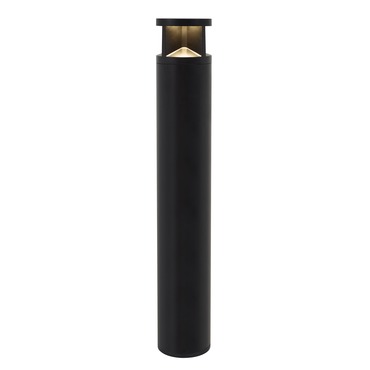
How to Shop
for Outdoor Path Lighting
When the sun sets, our outdoor spaces can become tricky to navigate without proper lighting. A key element to any outdoor environment is path lighting. Think of path lights as wayfinding landmarks, guiding us between gardens, around a pool, through the woods or down the driveway. The best outdoor path lights are unassuming by day, and stylishly helpful by night. Here are a few tips to finding the perfect outdoor path lighting.
Why is path lighting important?
Safety and security are the primary purposes of any outdoor lighting, but aesthetic appeal is a happy byproduct. Path lighting allows you to walk at night safely in conditions of low or no natural light. Rather than flooding the whole space with a blanket of light, you can provide localized pools of low light on the ground, right where you need it. Aside from being more visually interesting, it ultimately saves energy to boot. Remember, a well lit yard is an obvious deterrent to any would-be clandestine activity.
Path lights can also help direct the flow of foot traffic, leading people to points of visual interest in the landscape. Creating a meandering path of light is a great way to control sightlines and make a home's yard feel larger at night.
What types of fixtures can I use to light a pathway?
First, narrow down your selection by deciding whether you want to use line voltage or low voltage fixtures. If you are lighting a permanent architectural installation or outlining hardscaping (fences, walkways, paved areas), line voltage fixtures might be a good option. These fixtures tend to be more substantial, include underground wiring, and wherever you put them, they stay. If you want path lighting for a landscaped area full of foliage, the flexibility of low voltage lighting systems might be a better option. You can reposition low voltage fixtures to accommodate landscape changes over time. LED lighting is the norm in low voltage now, with significant energy savings and long-lasting bulbs that use no more than 1-10 watts per fixture.
Second, decide if you want in-ground or above-ground fixtures. Above-ground fixtures like bollards, shielded path lights and adjustable spots are probably the most popular choices. In-ground fixtures can be minimal and unobtrusive, but be mindful not to place in-ground path lighting under a tree where falling leaves can cover the fixture and obstruct the light.
Last, think about how you'd like to delineate the path. Do you want glowing fixtures to mark boundaries (fixture lights only itself), or do you want fixtures to light and 'create' the path (fixture clearly lights the ground)?
How much light do I need and how far apart should I space my lights?
Quantity of light is relative to overall brightness of the area. The more ambient light around (streetlights, neighboring houses, etc), the more light you'll need to make the path lighting stand out. In rural areas with low ambient light, less is more. Your eyes already adjust to the dark, and too much light can cause glare, making it more difficult to see. A little goes a long way. 5-10 watts of halogen light and 1-3 watts of LED for every 10 feet is fine.
In terms of spacing of the lights, refer to manufacturer specifications. Different fixture shapes, lamp sources and light distributions affect spacing. Rather than talking about spacing here, let's talk about the light position. Pay attention to any changes in landscape grade, turns, steps or obstructions. I like to highlight these anchor points and areas of visual interest first and then work around them to fill in the blanks.
Be mindful of light distribution from the fixture. Is it round or an ellipse? If it's an ellipse, do the long sides of the ellipse follow the edge of the path?If not, they should.
Also, do you want overlapping pools of light or distinct, isolated spots? The former provides added safety, offering a continuous line of uninterrupted light, while the latter is more dynamic and dramatic. You want to strike a balance between visual interest and safety.
Finally, make sure the fixture has adequate shielding as to not shine in people's eyes or into the sky. The light should point at the ground only.
What are Dark Skies ordinances, and how do they affect my lighting choices?
When we shine light into the sky at night, we take away from the ambiance of the night sky and needlessly waste energy. The spirit of "Dark Sky" laws is essentially to prevent this waste and light pollution. They also curb light trespass—when your lighting falls onto a neighboring property. If you have well-shielded path lighting directed at the ground, neither light pollution nor light trespass should be an issue. Another consideration with Dark Sky laws are animal breeding grounds in coastal regions, such as for sea turtles, restrictions are base local and federal ordinances controlled by the National Dark Sky Association and are strictly enforced.
Note: Dark Sky ordinances are typically adopted by municipalities on a voluntary basis, but some communities (more so on the west coast) have mandated restrictions.




















